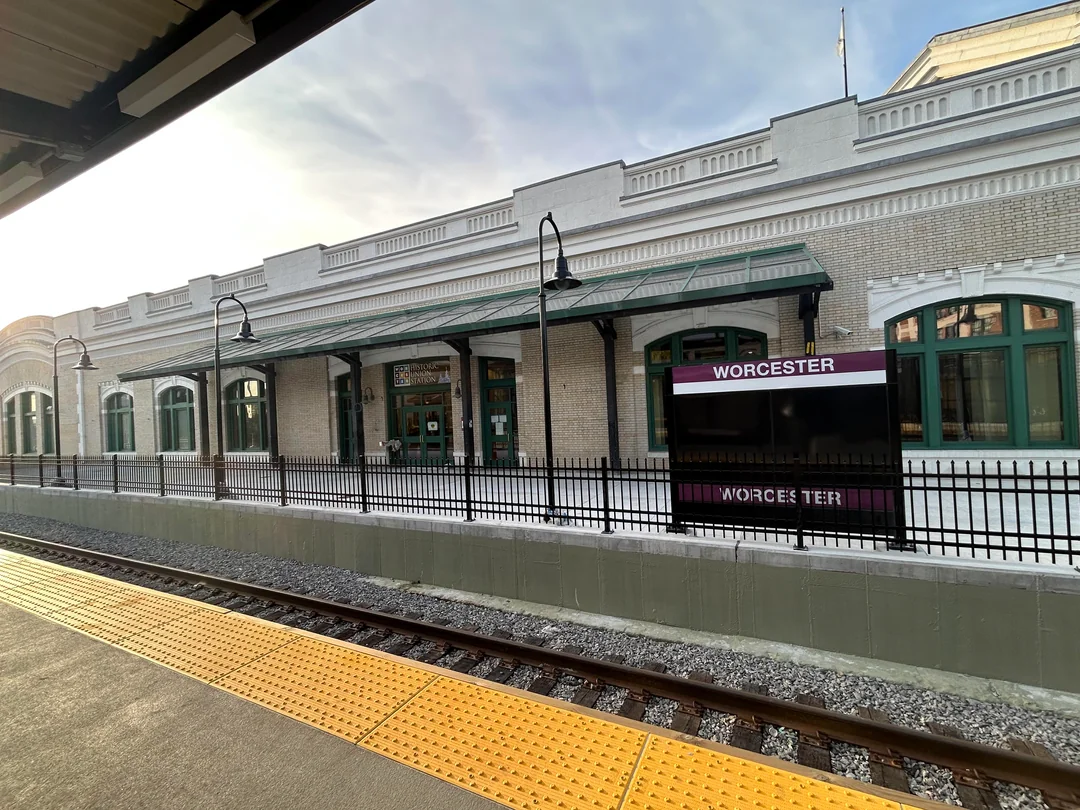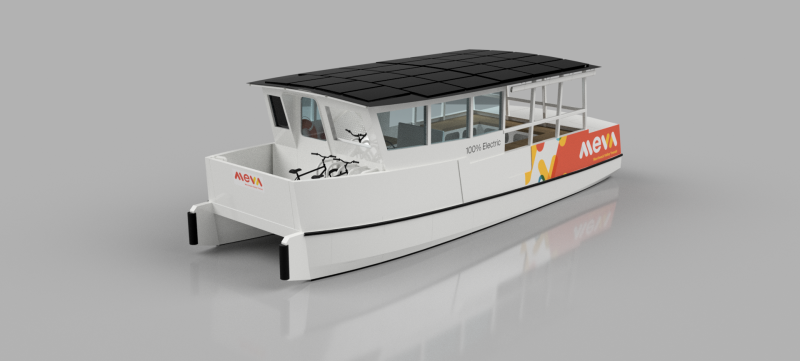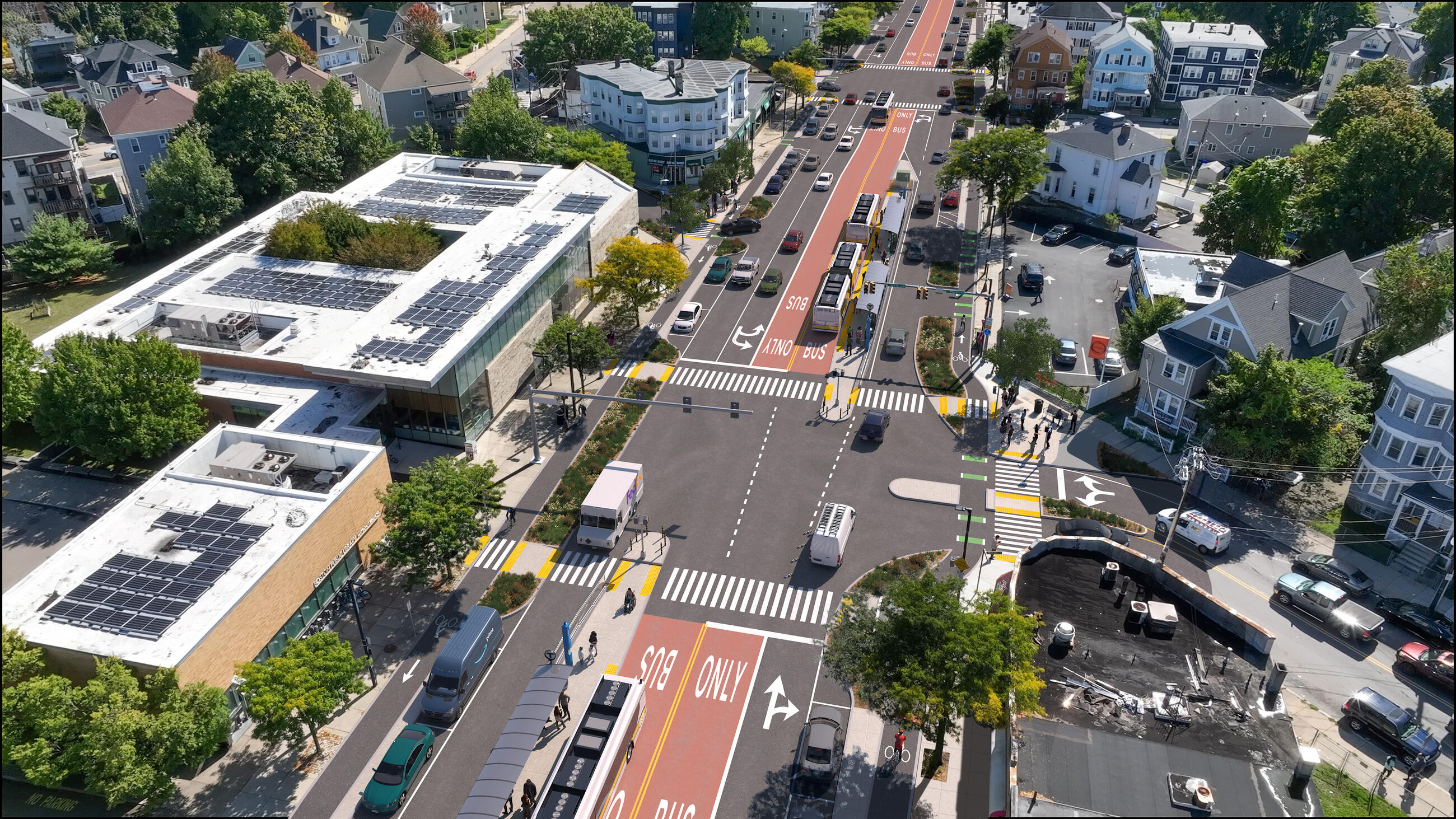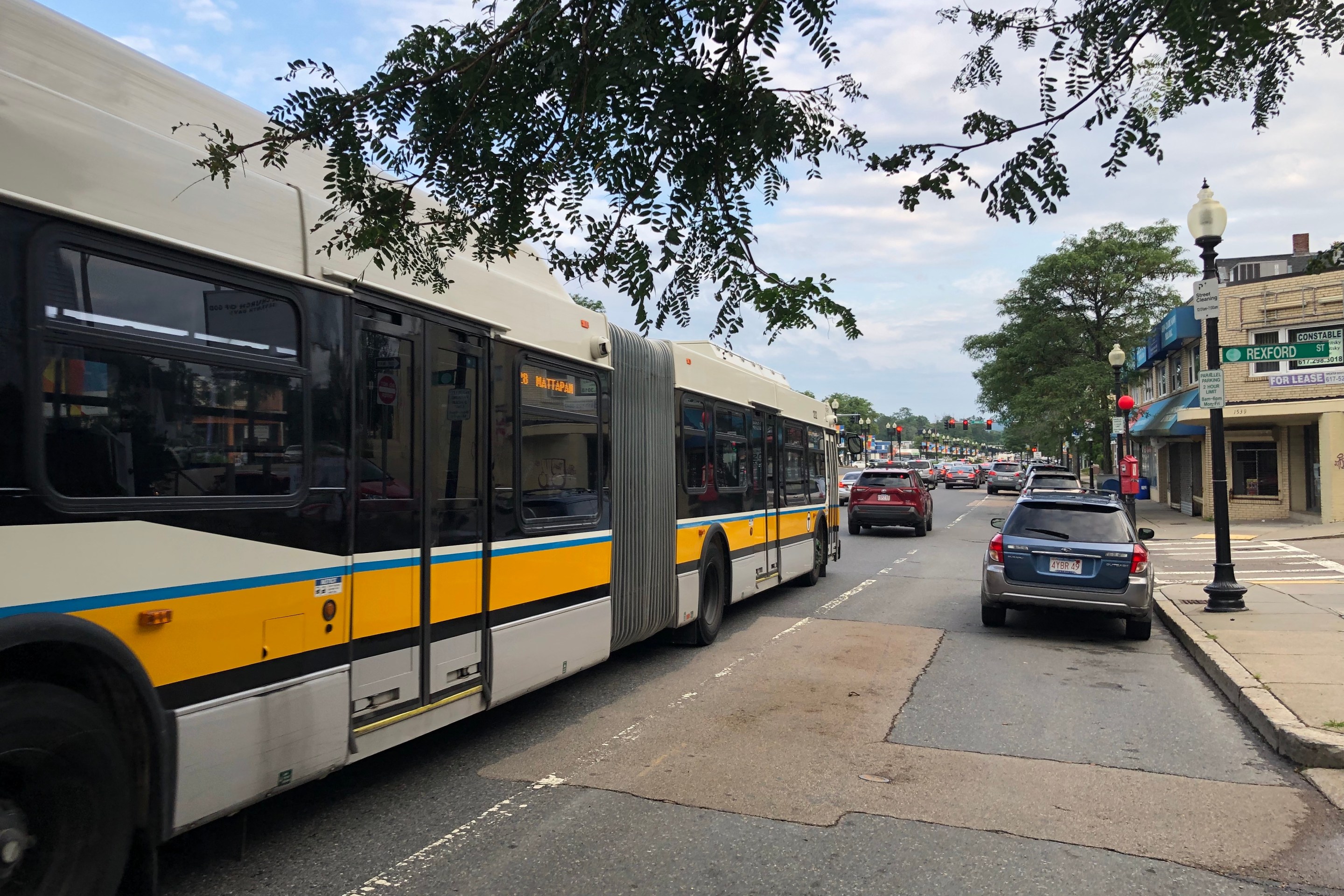Regular Worcester Line riders were surprised this week to see workers installing a new fence along the edge of the platform located to Union Station, blocking off access to what had been their primary boarding area before a major station renovation project began in early 2022.
For the past four years, the T has been working on a project to improve station capacity and accessibility in Worcester with a new center-island boarding platform.
Under the station's previous design, MBTA and Amtrak trains could only board and unload passengers on the side platform directly adjacent to the historic Union Station.
That single-track layout significantly limited how many trains could enter and board passengers at Union Station at any given time.
Furthermore, the station-side platform was not long enough to allow for level-boarding access along the entire length of an MBTA train.
An MBTA spokesperson explained that the old station-side platform "was never long enough to meet accessibility codes," which require level boarding to every door on the MBTA's trains.
They added that the older platform was also contributing to leaks into the historic building.
With the new 800-foot-long high-level platform in service, the MBTA can now offer fully accessible, level boarding on two trains at the same time – an arrangement that allows for the possibility of increased Amtrak and Worcester Line service in the future.
Construction continued over the summer between the new center platform and the historic station, as workers rebuilt the station-side tracks and reconstructed the old platform next to the historic station building.
That work appeared to be approaching its conclusion this fall, with new lighting and station signs going up on the freshly-laid concrete of the station-side platform.
But last week, regular riders noticed workers installing a decidedly unwelcome amenity: a new metal fence that blocks off all access to trains (see photo above).
Out in the cold, for accessibility's sake
"I don’t mind the center platform, but I didn’t think we’d be losing access from the station-side platform," says regular Worcester Line rider Tracy O'Connell Novick, who began sounding the alarm about the new fence on social media when she saw it going up last week.
"My understanding had been that this project would give us a second platform, in addition to the one we had before, where we were able to wait inside a beautiful, renovated building before we boarded our train," she added.
Riders access the new platform, which opened this summer, through a short tunnel that connects to the ground level of Union Station underneath the station-side track.
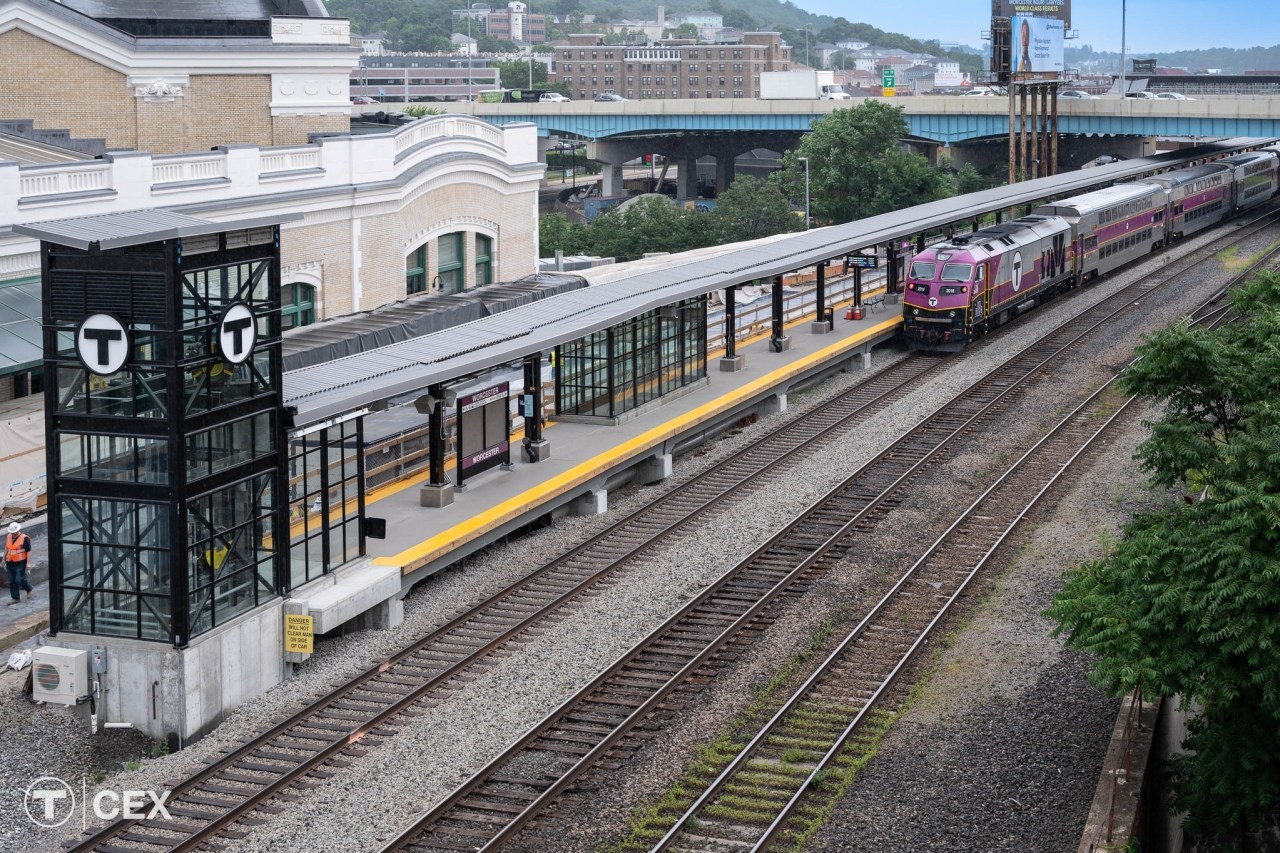
With the new platform layout, it's difficult to see when trains are arriving from inside Union Station, explains O'Connell Novick.
"There's a basic shelter there (on the new platform), so we're under cover, but you're still waiting outside, next to a beautiful, heated, well-lit train station," she said. "A lot of people, when it's cold, just wait on the stairway... But if you’re someone with mobility issues who just can’t run up the stairs when your train arrives, you’re going to be stuck with the waiting-in-the cold experience."
An MBTA spokesperson explained that the project's designers could not figure out a way to rebuilt the station-side platform in a way that would meet federal accessibility requirements.
"It wouldn’t meet code to rebuild [the station-side platform] in the same location, because it was limited in length by the two bridges" on either side of the station, the spokesperson explained, and would therefore not be able to offer level boarding to every door on the MBTA's trains.
In the years since the Worcester project began construction, the T has worked around this restriction in other station construction projects by promising to run shorter four-car trains on the Worcester Line, which theoretically would let it get away with shorter, 400-foot station platforms.
The distance between the Harding Street and Grafton Street bridge abutments on either side of Union Station is about 435 feet.
Change of plans
The MBTA and its design consultants, HDR, hosted several virtual public hearings about the project in 2019 and 2020, before construction began.
The T and HDR did not discuss any plans to close the station-side platform in the recording of the project's March 7, 2020 virtual public hearing. Project renderings from those meetings (see below, at left) show a yellow strip along the edge of the station-side platform, suggesting that it would remain in service for passenger boarding.
Those fence-free project renderings were also on the MBTA's official project website until May 2021, according to the Internet Archive. But by early 2022, when construction began, the T had updated the project website with new images that included a fence (below, right):
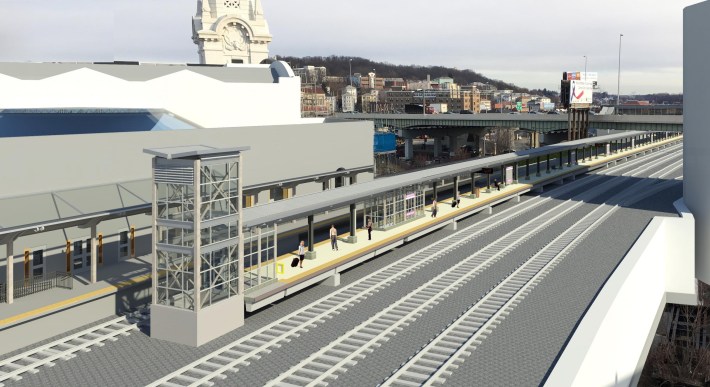
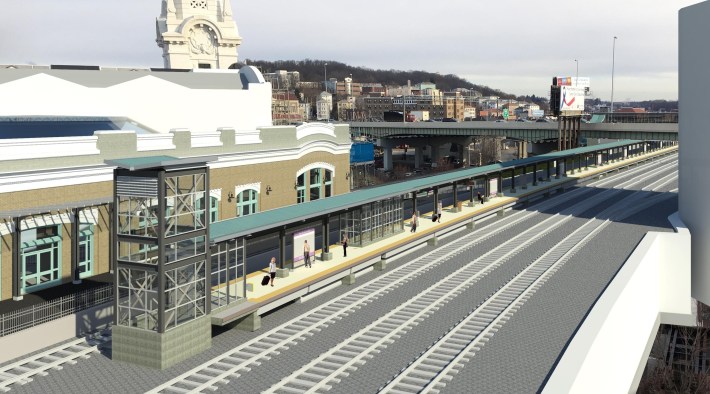
The MBTA's spokesperson explained that the project's renderings changed because the work on the station-side platform had not been in the scope of the MBTA's original plans.
The Worcester Redevelopment Authority (WRA), which owns the station, had initially planned to do the work after the new platform opened.
"The WRA was originally going to demolish it themselves, and later asked the MBTA to do it since we already had access to the right-of-way for the main construction project," the spokesperson wrote.
O'Connell Novick is also a member of Worcester's MBTA working group, a relatively new city task force that's focused on working with the T to improve regional rail service through Union Station.
In a meeting earlier this spring, she says she asked the T's staff to board "as many trains as possible" on the station-side track platform to allow for better access into the station.
She says that MBTA staff attending that meeting gave her no indication at that meeting that that platform would soon be fenced-off and inaccessible.
